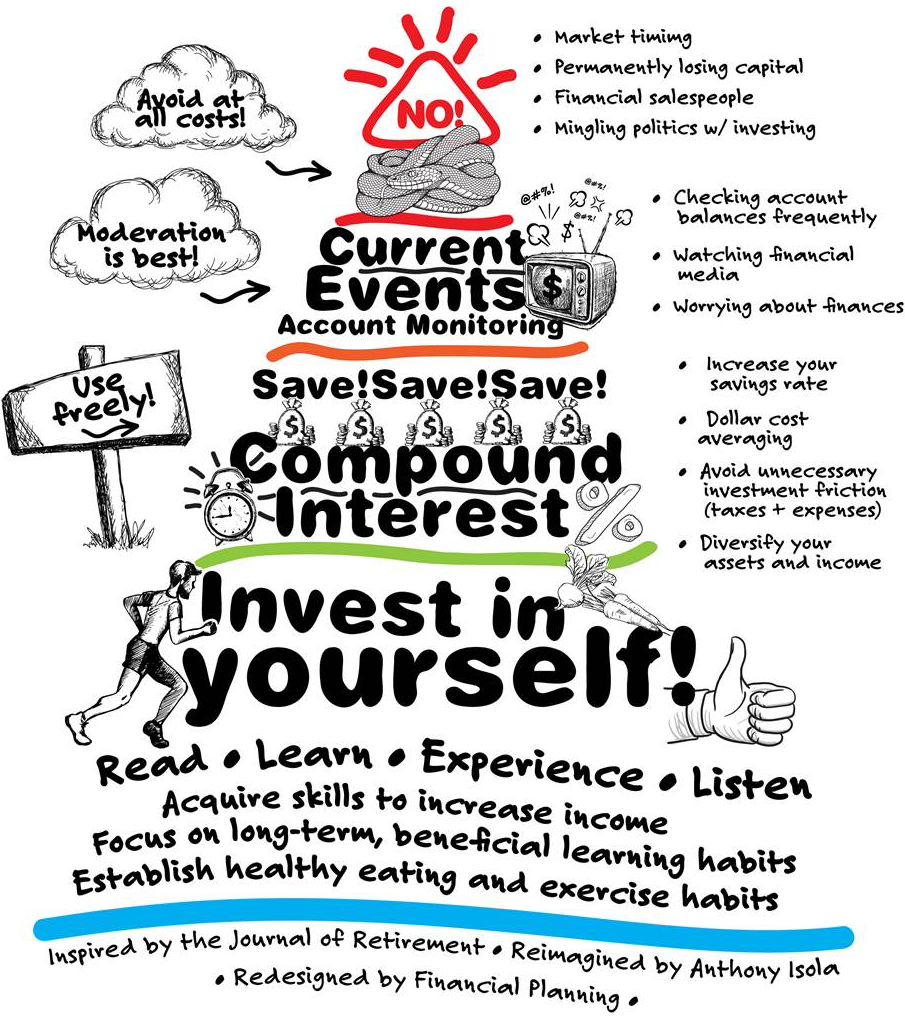
The way most people have been taught to learn is outdated and dangerous. The modern world requires people to frequently reinvent themselves in order to survive and thrive. Sadly, too few have the most important skill to accomplish this: the ability to learn how to learn.
Many are taught in the most horrific way possible: the teacher-directed lecture. It has been proven that in traditional lecture classes an astonishing 50% of the students are more likely to fail. A famous Nobel Laureate once stated, “Traditional courses are simply unethical.”
Being a former middle school teacher, I could not agree more. There is plenty of data that scientifically proves the best ways people learn things. Unfortunately, many public schools, universities, and corporate training programs blatantly ignore it.
The following have proven to be the best methods to teach people the priceless trait of learning how to learn. Since most Americans are as illiterate about money as I am about carpentry, let’s use finance as the topic to apply these skills:
- Find meaning – You can’t just tell people something is important. They need to find this meaning for themselves in order to learn. Instead of saying “money is something you need to know about,” try to have your target audience relate the topic to someone they care about who had difficulty with finances. Then they can ponder what it would be like if they had the ability to offer assistance to this situation.
- Avoid cognitive overload – Short-term memory can only process so much information. Why do you think it is much easier to remember 911 rather than your friend’s seven-digit number? Think of the success of Nike’s slogan “Just do It.” Chunk the information in to bite-sized pieces. It is probably not a good idea to teach the difference between stocks and bonds, and explore monetary policy — all on the same day.
- Active learning works best – Put down the highlighter and stop mindlessly re-reading the same passage over and over. Instead quiz yourself on the material and ask good questions like: “Why is this material important to me?” This will stimulate your learning process. Every financial literacy class should end with a brief quiz to enhance retention.
- Utilize prior knowledge – It’s hard to learn about anything without some prior knowledge. Mnemonics (remember ROY G. BIV) and analogies work best. Teach how the stock market works by comparing it to markets that people know about already (e.g., supply and demand determine the price for your house; your favorite celebrity’s salary; and stocks).
- Space out the material and review – Distribute learning over time, and constantly review. Our memories come with a timer. If we don’t reengage, memory disappears. Just like students should not cram everything in the night before a test, adults need to learn about money over long periods time.
- Images work – Graphic organizers are excellent learning tools. They help people make connections and see things in a different way. Using charts and graphs is a much better way to teach people about money than reading 100 pages from Benjamin Graham’s Security Analysis.
- Make plenty of mistakes – According to Jeff Bezos, “I believe we are the best place in the world to fail (we have plenty of practice!), and failure and invention are inseparable twins.” Maybe that penny stock you bought and lost all your money on will be your greatest teacher.
- Rely on mastery rather than performance – Focus on the process rather than the outcome. Learning how markets work should be the goal, not buying a stock that will provide a higher return than your classmate’s pick.
- Write about what you learned – This forces you to think about your thinking and to ask yourself important questions. This form of active learning has proven to help in both understanding and retention. An essay about why it is important for you to learn about money would do wonders in helping to understand a difficult topic. Better yet, a group activity where students can teach each other what they have learned is an excellent way to reinforce their newly acquired knowledge.
- Create a diverse environment – Data shows that learning improves when people are around others from diverse environments. People will think more carefully before speaking and listen more attentively. Maybe financial literacy would improve if people heard voices from someone other than a middle-aged white man.
One more thing; it helps if the student feels the teacher actually cares about their best interests. When I taught in a tough city school, there was a girl who had the face of an angel but the mouth of a teamster. This lead to her cursing out the principal, among other incidents. One day, she came into class with a gash on her cheek, the results of the work of a box-cutter. Unfortunately, this was commonplace there.
When I saw this I asked her, “Do you believe in God?”
She was taken aback but answered, “Yes.”
I then said, “Do you realize that cut was inches from your jugular vein? Do you understand how close you were to being killed? Maybe God was trying to warn you that you should change your ways before something really bad happens.”
From that point on, I could tell she listened in class in a much different manner than prior to the incident.
When people think that you care, they learn more. This also goes for working with a fiduciary advisor who must look your for your best interests rather than a conflicted financial salesperson who does not. Learning about money from a trusted advisor who speaks the truth and cares about you will be the best way to understand your finances.
Learning does not have a comfort zone and requires hard, dedicated work. If you do this, you will be rewarded in ways that no amount of money could ever buy.
Source: Learn Better by Ulrich Boser





